Skokie Lagoons (original) (raw)
The 894-acre Skokie Lagoons are a prime destination for water exploration, featuring public boat access, canoe and kayak rentals, fishing, biking and hiking trails and picnic areas.
On this page:
- Locations & Things to Do
- Trails
- Accessible Boat Launch
- Canoe & Kayak Rentals at Tower Road
- Fishing at Skokie Lagoons
- History
- Nature Notes
- Volunteer Opportunities
Locations & Things to Do
Skokie Lagoons includes multiple locations:
Erickson Woods
Entrance
Willow Rd, east of I-94/Edens Expy
Cook County, IL 60093
(near Winnetka)
Hours
Year-round: Sunrise to Sunset
Closures & Alerts
Tower Road
Entrance
Tower Rd, west of Forestway Dr
Cook County, IL 60093
(near Winnetka)
Hours
Year-round: Sunrise to SunsetBoat Rental: 9 am to SunsetBoat rentals are available from April to October, weather permitting. Service begins in mid-April on a first-come, first-served basis, operating from Fridays through Mondays, and expands daily in May. After Labor Day, service is available on Fridays through Sundays. Please call 847-414-5883 to confirm availability before visiting.
Closures & Alerts
Tower Road Boat Launch
Entrance
Tower Rd, west of Forestway Dr
Cook County, IL 60093
(near Winnetka)
Hours
Year-round: Sunrise to Sunset
Closures & Alerts
Forest Way Grove
Entrance
Forest Way Dr, south of Dundee Rd
Cook County, IL 60022
(near Glencoe)
Hours
Year-round: Sunrise to Sunset
Closures & Alerts
Trails
North Branch Trail System
The North Branch Trail System offers paved and unpaved trails along approximately 20 miles of the North Branch of the Chicago River, making it a premier biking route in the northern suburbs.
Location: Chicago, Glenview, Morton Grove, Niles, Northbrook, Northfield, Skokie & Winnetka
Estimated Total Length
36.7 miles
Hours
Year-round: Sunrise to Sunset
Closures & Alerts
Accessible Boat Launch
The Tower Road Boat Launch entrance at Skokie Lagoons features an accessible trailered boat launch for canoes, kayaks, rowboats, sailboats and boats with electric trolling motors.
Tower Road Boat Launch
(part of Skokie Lagoons)
Tower Rd, west of Forestway Dr
(near Winnetka)
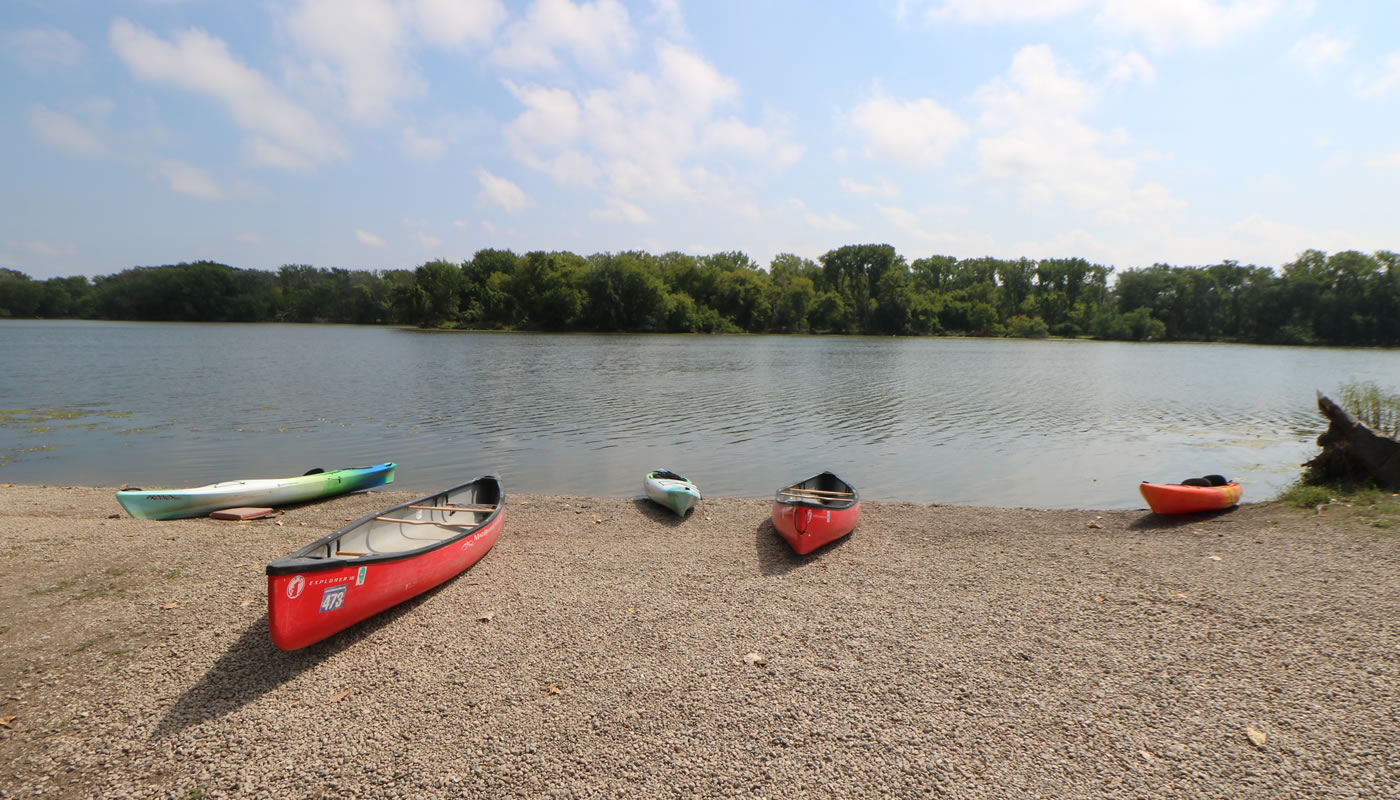
Canoe & Kayak Rentals at Tower Road
Boat rentals are available from April to October, weather permitting. Service begins in mid-April on a first-come, first-served basis, operating from Fridays through Mondays, and expands daily in May. After Labor Day, service is available on Fridays through Sundays. Please call 847-414-5883 to confirm availability before visiting.
Tower Road
(part of Skokie Lagoons)
Tower Rd, west of Forestway Dr
(near Winnetka)
847-414-5883
| Watercraft | Rate |
|---|---|
| Single Kayak | $25/hr |
| Tandem Kayak | $35/hr |
| Canoe | $30/hr |
Discounts: Monday Discount: Reduced per-hour rates (except holidays). Paddle Card: Fifth visit FREE after four paid visits (restrictions apply).
Regulations: Must be 18 or older with a government-issued ID to fill out a rental waiver. No more than three adults per row boat or fishing boat. Minimum age and weight: 3 years, 35 lbs. Dogs are welcome at the owner’s risk and the operator’s discretion. A properly fitted life vest must be worn by every paddler for the duration of the rental period. No alcohol or glass bottles.
Skokie Lagoons Boathouse Project
The Forest Preserves is planning a new boathouse facility at the Skokie Lagoons to replace the existing temporary facility—a repurposed shipping container with no power or water. View plans, progress and sign up for updates.
Fishing at Skokie Lagoons
Skokie Lagoons is a system of seven lagoons connected by channels on the Skokie River. The total acreage for the entire lagoon system is 242 acres. The maximum depth of 14.9 feet is located in Lagoon #2; however, pockets of 10 feet or more can be found in most of the other lagoons. The Tower Road Boat Launch entrance features an accessible trailered boat launch for canoes, kayaks, rowboats, sailboats and boats with electric trolling motors. Canoe and kayak rental available.
- Fishing Map (PDF)
- Population Survey: Lagoons #1-2 (PDF) | Lagoons #3-5 (PDF) | Lagoon #6
Fishing Access
Fishing access is available at all Skokie Lagoons entrances. An accessible fishing area and accessible boat launch are available at Tower Road Boat Launch:
Tower Road Boat Launch
(part of Skokie Lagoons)
Tower Rd, west of Forestway Dr
(near Winnetka)
*Features accessible fishing area.
- Distance to accessible parking: 30 ft
- Currently no accessible bathroom
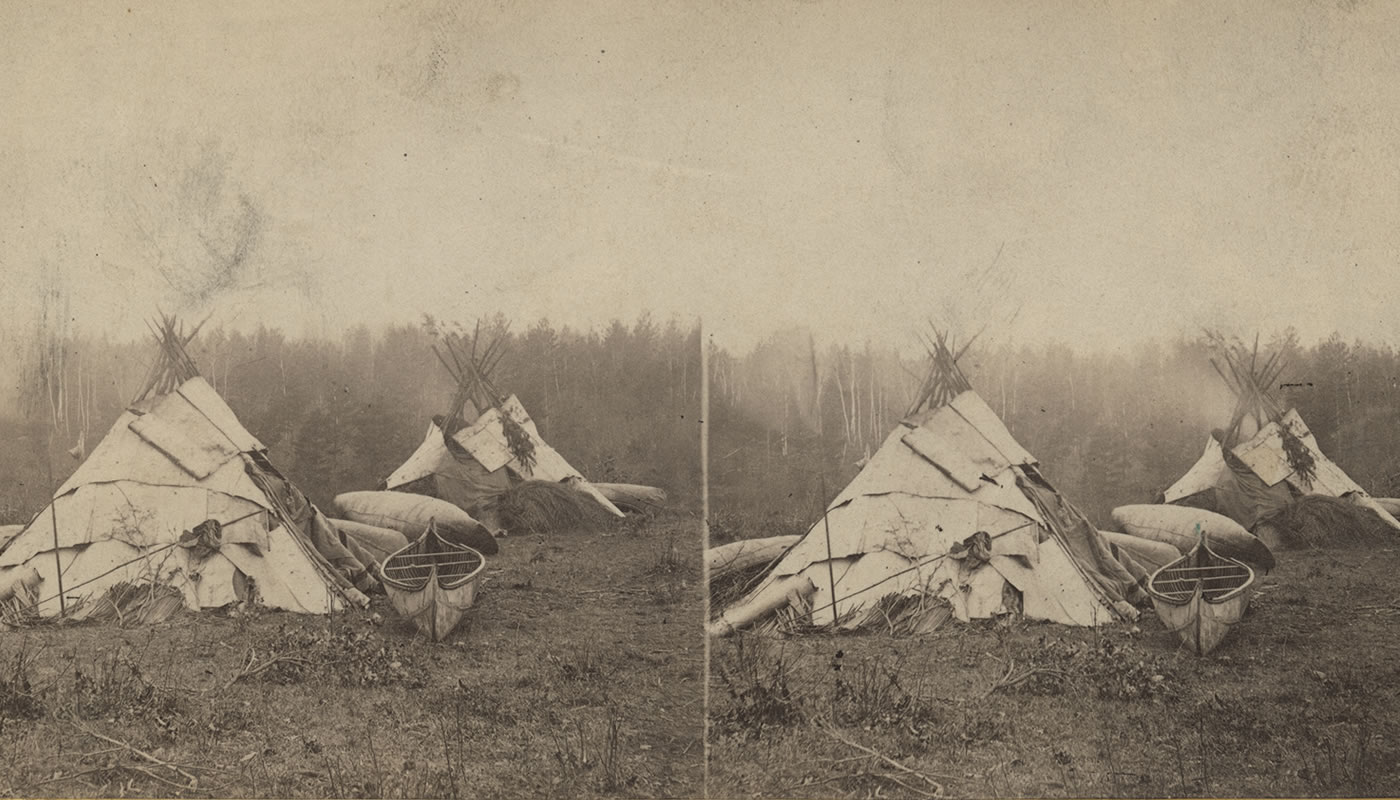
An Ojibwa camp in Minnesota in 1870. Photo courtesy of the Minnesota Historical Society.
History
What is now the Skokie Lagoons was once a huge marsh, nestled between ridges created by the shorelines of ancient Lake Chicago. Its name is derived from the Potawatomi “che-wabskoki” for large swamp or marsh. Changing land usage and human interaction have transformed this area into the series of lagoons, channels and islands recognizable to visitors today.
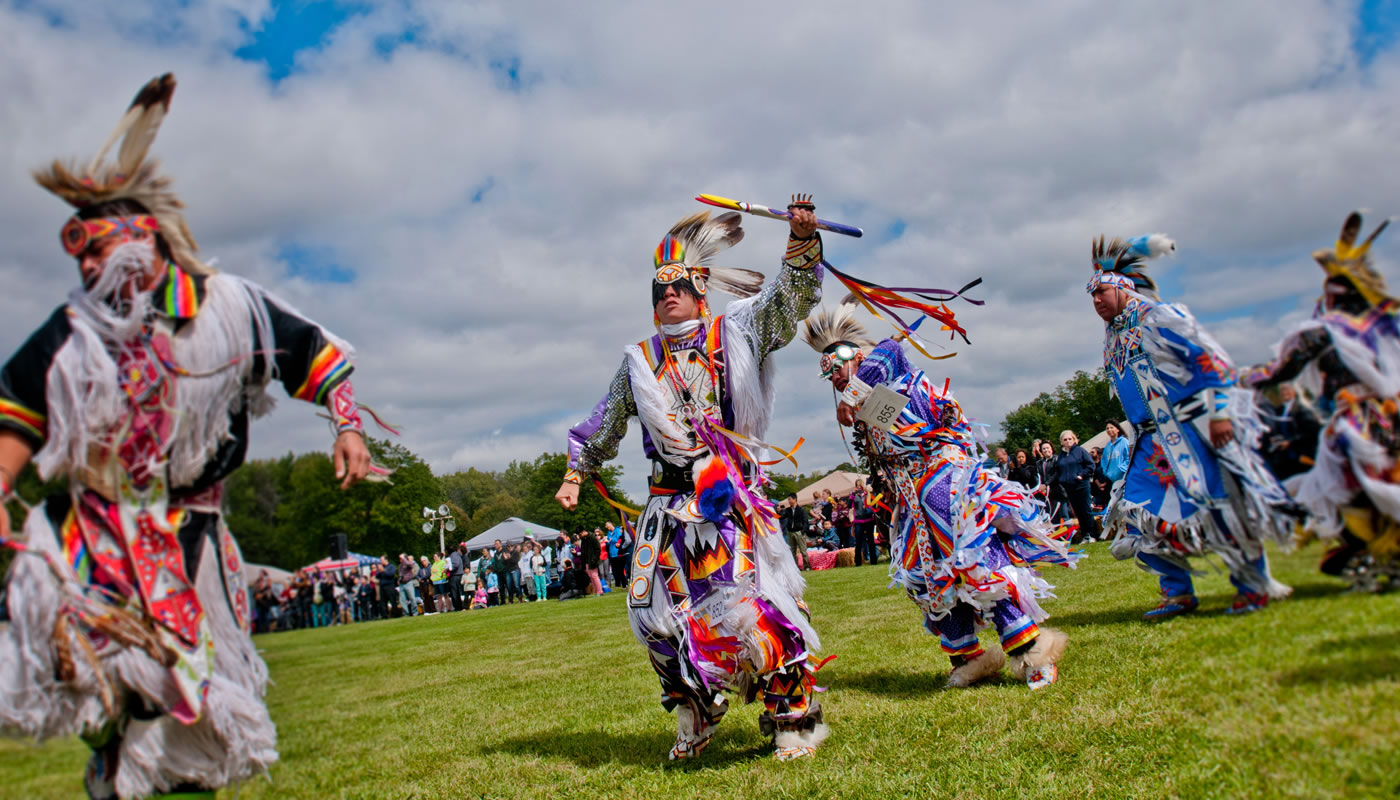
The Annual Chicago Powwow celebrates Tribal diversity of Native Americans from Cook County and around the country.
Native Americans in the Chicago Region
Skokie Lagoons is part of the traditional homelands of the Council of Three Fires – the Ojibwa, Ottawa and Potawatomi tribes. Small tribal groups set up camps along waterways with fertile soils to raise corn, squash and beans, and when possible, near sugar maples to collect sap to use as a sweetener. Fishing, tool-making and collecting medicinal plants were daily activities. In winter, local tribes would follow animal migration routes and establish smaller camps for hunting and acquiring furs for use and trade. This annual cycle was a way of life for generations.
But after European contact and the establishment of the United States of America, settlers and the federal government pushed Native people out of the area—culminating in a series of treaties between 1816 and 1833 that transferred what is now Cook County from Native groups to the U.S. federal government. By the 1860s, private individuals owned most of the property in Cook County.
Native Americans still live in the Chicago region. However, no federally recognized Tribal lands remain in the State of Illinois.
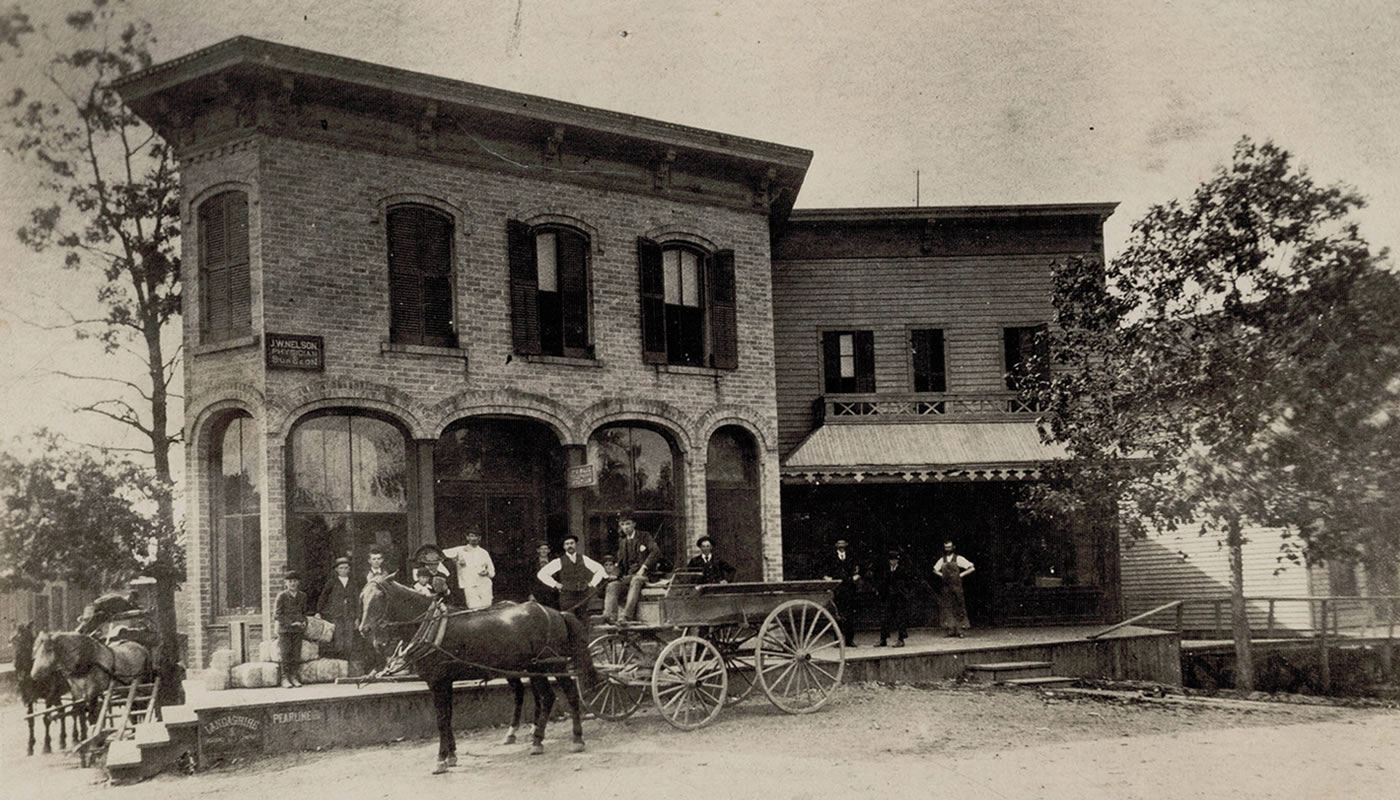
Winnetka in the 1880s: Max Meyer’s store on Green Bay Road and Elm Street. Photo courtesy of the Winnetka Historical Society.
Settlers Change the Land
Settlers used the land in the Skokie Valley to graze livestock and harvest peat to burn for warmth during the winter. The marsh’s ecosystem suffered irreversible damage as drainage projects and agriculture increased.
The advent of the region’s railroad in 1855 made commuting between the Skokie Valley and Chicago easier, and the area’s population boomed as people dispersed from the city after the Great Chicago Fire of 1871.
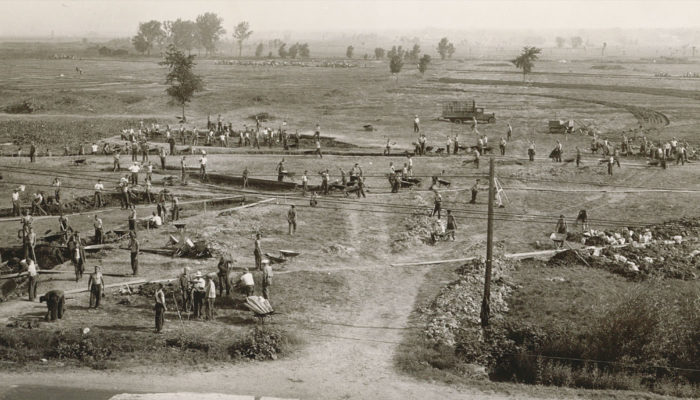
Looking north from Willow Road Bridge the month the lagoon project began, July 1933.
Civilian Conservation Corps Project
The Forest Preserves of Cook County acquired land in the Skokie Valley in 1920 with plans to create lagoons for recreation and flood and mosquito control. Those plans came to life after Franklin D. Roosevelt formed the Civilian Conservation Corps to put unemployed men to work during the Great Depression.
Between 1933 and 1941, thousands of men, including three segregated African American companies, lived and worked at Camp Skokie Valley. Men worked seven-hour days, five days a week to create a new landscape featuring seven lagoons. During free time, Camp Skokie Valley had academic and vocational classes, a chapel, organized sports and even a barbershop.
In the first year, all construction was done by hand, with heavy equipment arriving soon after. In total, four million cubic tons of soil were excavated during what became the largest public works program in the country during the Great Depression.
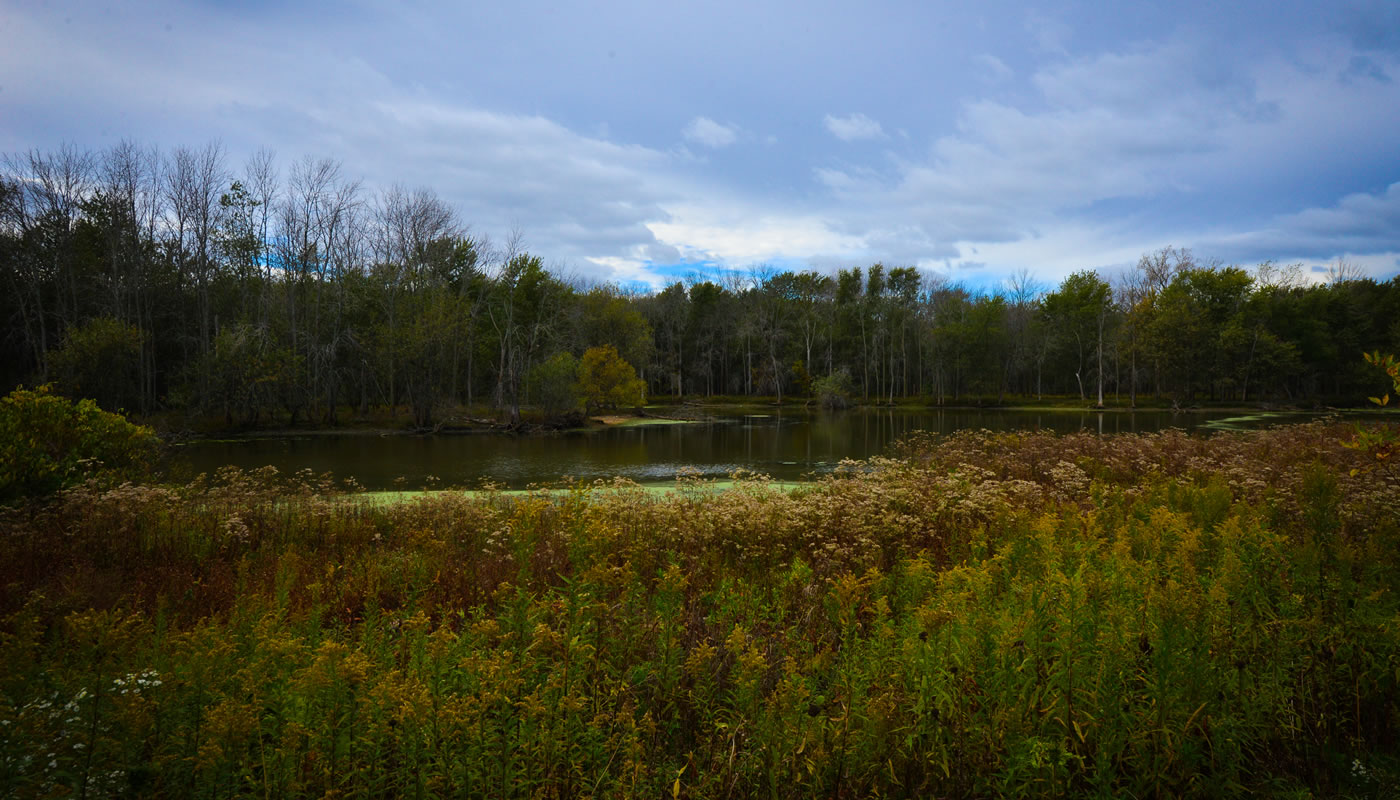
Nature Notes
The Skokie Lagoons provide critical habitat for wildlife despite this area’s transition from the “great marsh” Native Americans knew to the manmade lagoons dug out in the 1930s. Migrating ducks, herons, cormorants and mammals like coyote, mink, and gray and red fox all depend on the lagoons for food and habitat. A great variety of fishes including bluegill, sunfish and largemouth bass swim in the waters here.
Restoring Skokie Lagoons
Four million cubic tons of soil were excavated to create Skokie Lagoons between 1933 and 1941. Fast forward to the 1990s, when the Forest Preserves removed one million cubic tons of sediment, in addition to approximately 40 tons of carp and invasive species, to improve the health and functionality of the lagoons.
Staff and volunteers continue to do restoration work on the wetlands, uplands and prairies surrounding the lagoons. That includes removing a thick curtain of buckthorn and other invasive species, cultivating native plants and dispersing native seeds to increase biodiversity.

Volunteer Opportunities
Join Shedd Aquarium Action Day volunteers in restoring habitat at Skokie Lagoons.